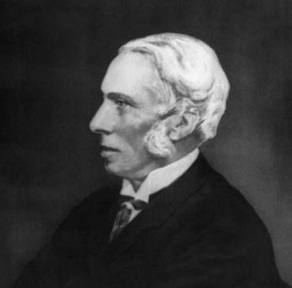Richard Norman Shaw facts for kids
Quick facts for kids
Richard Norman Shaw
|
|
|---|---|
 |
|
| Born |
Richard Norman Shaw
7 May 1831 Edinburgh, Scotland
|
| Died | 17 November 1912 London, England
|
| Occupation | Architect |
| Spouse(s) |
Agnes Wood
(m. 1867) |
Richard Norman Shaw (born May 7, 1831 – died November 17, 1912) was a famous British architect. He designed many buildings, especially large country houses and business places, from the 1870s to the early 1900s. Many people think he was one of Britain's best architects, and his ideas about building design were very popular in the 1880s and 1890s.
Contents
Early Life and Learning
Richard Norman Shaw was born in Edinburgh, Scotland. He was the youngest of six children. His father passed away when Richard was very young. He went to school in Edinburgh and later in Newcastle.
Around 1846, his family moved to London. Richard started learning about architecture right away. By 1849, he was working for a well-known architect named William Burn. He also took evening classes at the Royal Academy of Arts, where he learned even more about design. There, he met another architect, William Eden Nesfield, and they worked on some designs together.
From 1854 to 1856, Shaw traveled with a special scholarship. He drew many sketches of buildings he saw, and these drawings were later published in a book called Architectural Sketches from the Continent. When he returned to London, he continued his training with another famous architect, George Edmund Street.
Becoming a Master Architect
After 16 years of learning and training, Shaw opened his own architecture business in 1863. In 1872, he became an Associate of the Royal Academy, which is a big honor for artists and architects.
Shaw designed buildings for many different people, including artists and important business owners like Lord Armstrong. He created large homes such as Cragside, Grim's Dyke, and Chigwell Hall. He also designed many commercial buildings, using a variety of styles.
In 1877, Shaw became a full member of the Royal Academy. He believed strongly that architecture was an art form, not just a job. Later in his career, his designs became more classical, which means they looked more like ancient Greek and Roman buildings. This style influenced many buildings built in the early 1900s. Shaw designed homes in areas like Pont Street in London and public buildings like New Scotland Yard.
His early country houses were special because they didn't follow the popular "Neo-Gothic" style, which looked like old castles. Instead, he used traditional materials like wood frames (called half-timber) and hanging tiles. His houses often had big, projecting gables (the triangular part of a wall under a sloping roof) and tall, strong chimneys. They also featured cozy "inglenooks," which were warm seating areas next to a fireplace. These homes soon became known as the "Queen Anne style," even though they weren't from Queen Anne's time. As he became more skilled, his buildings looked more dignified and peaceful, with a quiet, homely charm. He used less half-timbering over time, and eventually stopped using it completely.
Family Life
In 1867, Richard Norman Shaw married Agnes Haswell Wood. Agnes was from New South Wales, Australia. Her nephew, Cecil Wood, also became an architect, likely inspired by Shaw's career.
In his later years, Shaw lived in Hampstead, London. He passed away in London and is buried in St John-at-Hampstead Churchyard.
Bedford Park: A Special Project
One of Shaw's most important projects was planning and designing buildings for Bedford Park, London. This was a new neighborhood being built in London. Shaw was hired in 1877, and he designed many of the homes and even the church, St Michael and All Angels, Bedford Park. His work here helped create the idea of a "garden city" suburb, where houses were built with gardens and green spaces.
Famous Buildings by Richard Norman Shaw
Richard Norman Shaw designed many important and beautiful buildings. Here are a few examples:
- Cragside, Northumberland (1869-1885): This was the first house in the world to be lit by electricity generated by water power! It was built for Lord Armstrong.
- Grim's Dyke, Harrow, London (1870): A large country house.
- Norman Shaw Buildings, London (1887-1906): These buildings were originally the headquarters for the Metropolitan Police (the police force in London) and were known as New Scotland Yard. Today, they are used as offices for the Parliament.
- Lowther Lodge, Kensington, London (1873-1875): This building is now the headquarters of the Royal Geographical Society.
- Adcote, Shropshire (1876-1881): Another impressive country house.
- Chigwell Hall, Essex (1876): This building is now owned by the Metropolitan Police.
- Tabard Hotel, Chiswick, London (1880): A well-known hotel.
- Piccadilly Hotel, Piccadilly Circus, London (1905-1908): This was one of his last projects.
Images for kids
-
Cragside, Northumberland, 1869
-
Lowther Lodge, headquarters of the Royal Geographical Society, 1873
-
House for Kate Greenaway in Frognal, 1885
See also
 In Spanish: Richard Norman Shaw para niños
In Spanish: Richard Norman Shaw para niños
- The English House
- Richmond Plantation













